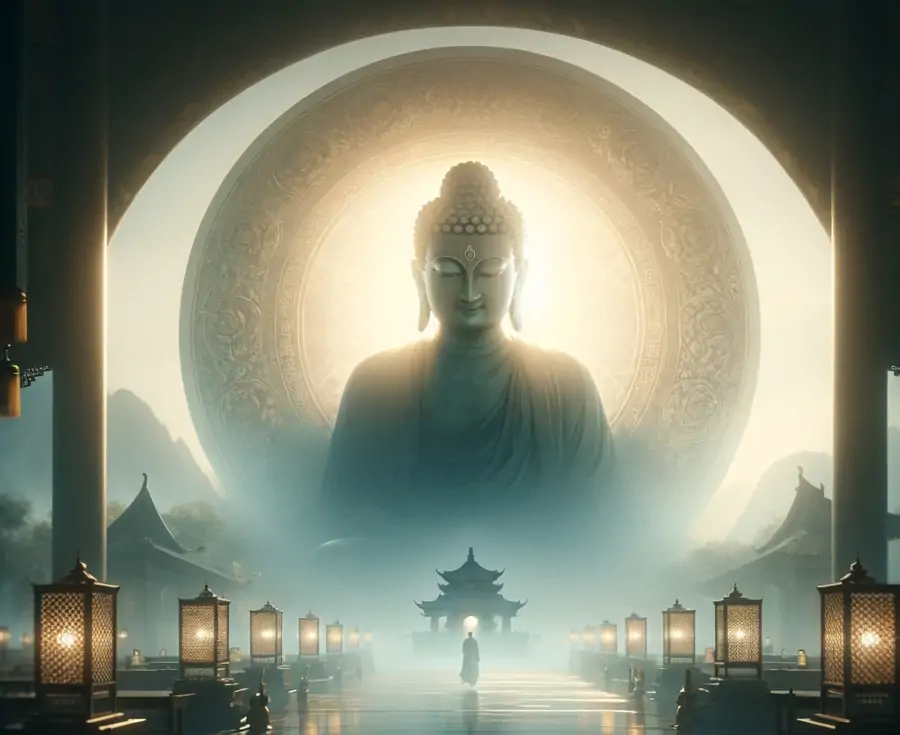The Essence of Bajracharya Mantra
In the heart of Bajracharya Buddhism practice lies the Bajracharya Mool Mantra, also known in the Newari language as Nhikan Mantra (न्हिकं मन्त्र). Typically, this mantra is recited 108 times.
Om Khandarohi Hum Phat
ॐ खण्डरोही हूँ फट्
This mantra, regarded as one of the most powerful mantras in the Bajracharya Buddhism tradition, is believed to clear and drive away obstacles, offering a path to spiritual clarity and focus. Mantras, in general, are recited for a variety of reasons – spiritual growth, meditation, or as part of religious rituals. They serve as powerful tools to concentrate the mind and connect with spiritual energies.
A Guarded Secret with Wide Influence
Interestingly, within the Bajracharya community, there’s a belief that this mantra’s power is so immense that it must be kept secret. However, its significance is not limited to this community alone. It is also well-recognized in Tibetan Buddhism, with numerous texts elaborating on its meaning and use. This article marks a unique exploration of the mantra in the context of Bajracharya Buddhism.
The Path to Becoming a Bajracharya
To become a Bajracharya, every male practitioner undergoes a significant ritual known as Acharyabhishek or Bajracharya Abhisek, commonly referred to in the Newari language as Bare Chhuyegu. This elaborate process culminates in the new Bajracharya receiving the Bajracharya Mool Mantra (न्हिकं), whispered into their ear, symbolizing their initiation into this sacred path.
Decoding the Mantra: A Closer Look at Each Element
Om – ॐ: The Universal Sound
The mantra begins with “Om”, a seed syllable (Bīja mantra) that is considered sacred and holy. It symbolizes the essence of ultimate reality, consciousness, or Atman (the soul or self within). Its use in mantras signifies an invocation of the highest spiritual truths.
Khandarohi – खण्डरोही: The Goddess of Action
“Khandarohi,” in Vajrayana Buddhism, is revered as a divine feminine entity, often referred to as the ‘Goddess of Action’ or ‘Mother of Protection’. This title stems from her association with the ‘Action Mantra,’ a chant recognized for its power in overcoming obstacles and hindrances. Devotees believe that invoking Khandarohi’s name offers great spiritual protection. As a Dakini, symbolizing the female manifestation of enlightened energy, her role is pivotal in tantric rituals.
Hum – हूँ: The Symbol of Removal
“Hum” is a common element in Buddhist mantras, representing the removal of obstacles on the path to enlightenment. It also symbolizes the divine presence or the essence of truth, reinforcing the mantra’s spiritual significance.
Phat – फट्: Dispelling Illusion
Finally, “Phat” is a syllable used in tantric practices, particularly in Buddhist mantras. It is associated with dispelling illusion or ignorance and manifesting enlightenment. Its inclusion in the mantra reinforces its purpose as a tool for spiritual awakening.
Conclusion: Embracing Spiritual Enlightenment
“Om Khandarohi Hum Phat” is not just a mantra; it’s a spiritual journey encapsulated in a phrase. Its significance in Bajracharya Buddhism and its broader relevance in Tibetan Buddhism highlight its universal appeal. By understanding each element of the mantra, practitioners and admirers alike can appreciate its profound spiritual depth and embrace the path to enlightenment it offers.
References
- Khandarohi – The Dakini of Action, tsemrinpoche.com
- KHANDAROHI, https://kwelos.tripod.com/khandarohi.htm
- OM KHANDAROHI HUM HUM PHAT (SONG)
- A Banquet of the Greatly Blissful Circle of Pure Offerings, Lama Thubten Yeshe, 2008
- The Preliminary Practice of Vajrasattva, Lama Zopa Rinpoche, Lama Thubten Yeshe, 2019

